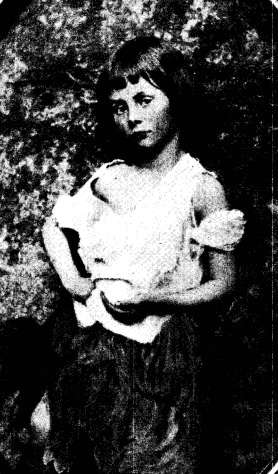Artifact

Here's Alice through a different looking glass: Lewis Carroll's lens. This famous pose of Alice Liddell—auctioned off by her descendants in June—was taken by Carroll in 1858; seven years later he would publish the tale he'd made up to amuse the girl, Alice's Adventures in Wonderland.
Victorian photos are often opaque today; many were frankly narrative and were intended to evoke pathos. Carroll dressed Alice as a "picturesque" beggar in imitation of the work of Oscar Rejlander, an early professional photographer who often posed his models as urchins. Rejlander's most successful subject pretended to be a popular Dickens character, "Poor Jo" from Bleak House. Thus Carroll borrowed his pathos from Rejlander, who borrowed his narrative from Dickens; today the whole train of creativity would be the subject of corporate copyright litigation.
Yet it was Carroll as writer who helped found the modern, litigious entertainment economy. Alice in Wonderland freed children's literature from the burden of teaching pieties, and helped to justify entertainment for its own sake.
Alice Liddell paid the price for that revolution, for she never escaped Carroll's artful literary posing. It was she who importuned him to write down his stories, but she soon grew weary of the fictional persona that overwhelmed her life. "But oh my dear I am tired of being Alice in Wonderland," she once wrote to her son. Or as Alice says to the Caterpillar, "I can't explain myself, I'm afraid, sir, because I'm not myself, you see."


Show Comments (1)